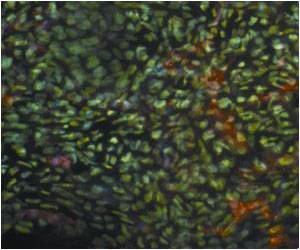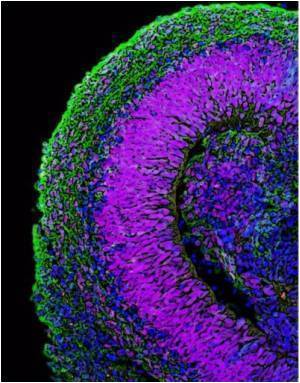The gingival mesenchymal stem cells (GMSCs) present in the gum tissues accelerate wound healing. These cells can help in treating many inflammatory and autoimmune diseases.

‘Gingival mesenchymal stem cells accelerate wound healing and treat various inflammatory and autoimmune diseases.’





Xiaoxing Kou, a visiting scholar at Penn Dental Medicine, was the first author on the work. Shi and Kou collaborated with colleagues Chider Chen and Anh Le from Penn Dental Medicine as well as Yanheng Zhou from Peking University, Xingtian Xu from the University of Southern California, Los Angeles, Claudio Giraudo and Maria L. Sanmillan from the Children's Hospital of Philadelphia, and Tao Cai from the National Institute of Dental and Craniofacial Research.From earlier work by Shi's group and others, it was clear that mesenchymal stem cells perform many of their functions by releasing signaling molecules in extracellular vesicles. So to understand what distinguishes mesenchymal stem cells in the gingiva from those in the skin, the Penn-led team began by comparing these extracellular vesicles between the two types. They found that the GMSCs contained more proteins overall, including the inflammation-dampening IL-1RA, which blocks a proinflammatory cytokine. IL-1RA also happens to be used as a therapy to treat rheumatoid arthrisits, an inflammatory condition.
Next the team zoomed in to look at what might be controlling the release of IL-1RA and other cytokines. They had a suspect in the protein Fas, which they had earlier connected to immune regulation. They found that in gingival MSCs had more Fas than skin MSCs, and that mice deficient in Fas had reduced IL-1RA as well as reduced secretion of IL-1RA.
Further molecular probing revealed that Fas formed a protein complex with Fap-1 and Cav-1 to trigger the release of small extracellular vesicles. To identify the connection with wound healing, they examined wound tissue and found that IL-1RA was increased in GMSCs around the margins of wounds. Mice lacking IL-1RA or in which the protein was inhibited took longer to heal gingival wounds.
In contrast, when the researchers isolated IL-1RA that had been secreted from GMSCs and injected it into wounds, it significantly accelerated wound healing.
Advertisement
These findings may have special significance for people with diabetes, a major complication of which is delayed wound healing. In the study, the researchers found that GMSCs in mice with diabetes were less able to secrete extracellular vesicles compared to GMSCs in healthy mice, and their GMSCs also had less IL-1RA secretion. Introducing extracellular vesicles secreted from the GMSCs of healthy mice reduced wound healing time in diabetic mice.
Advertisement
"We are targeting translational therapies," says Shi. "These cells are easy to harvest from the gingiva, and that makes them a beautiful cell for clinical use. We have a lot of work ahead of us, but I can see using these cells to reduce scar formation, improve wound healing, and even treat many inflammatory and autoimmune diseases."
Source-Eurekalert















